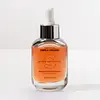What's inside
What's inside
 Key Ingredients
Key Ingredients

 Benefits
Benefits

 Concerns
Concerns

 Ingredients Side-by-side
Ingredients Side-by-side

Water
Skin ConditioningPropanediol
SolventGlycerin
HumectantPentylene Glycol
Skin ConditioningSalicylic Acid
MaskingSodium Citrate
BufferingMaltodextrin
AbsorbentParfum
MaskingPlinia Cauliflora Fruit Extract
Skin ConditioningZinc PCA
HumectantXanthan Gum
EmulsifyingMalpighia Glabra Fruit Extract
Skin ConditioningAscorbic Acid
AntioxidantBiosaccharide Gum-1
HumectantSodium Levulinate
Skin ConditioningLimonene
PerfumingGlyceryl Caprylate
EmollientSodium Anisate
AntimicrobialBixa Orellana Seed Extract
MaskingHydroxycitronellal
PerfumingWater, Propanediol, Glycerin, Pentylene Glycol, Salicylic Acid, Sodium Citrate, Maltodextrin, Parfum, Plinia Cauliflora Fruit Extract, Zinc PCA, Xanthan Gum, Malpighia Glabra Fruit Extract, Ascorbic Acid, Biosaccharide Gum-1, Sodium Levulinate, Limonene, Glyceryl Caprylate, Sodium Anisate, Bixa Orellana Seed Extract, Hydroxycitronellal
Water
Skin ConditioningMandelic Acid
AntimicrobialSodium Hydroxide
BufferingSalicylic Acid
MaskingPalmitoyl Pentapeptide-4
Skin ConditioningSodium Polyacrylate
AbsorbentPhenoxyethanol
PreservativeZinc PCA
HumectantHydroxyethylcellulose
Emulsion StabilisingCitric Acid
BufferingGlycerin
HumectantSodium Gluconate
Skin ConditioningEthylhexylglycerin
Skin ConditioningBiosaccharide Gum-1
HumectantSodium Levulinate
Skin ConditioningGlyceryl Caprylate
EmollientHydrolyzed Caesalpinia Spinosa Gum
AbsorbentSodium Anisate
AntimicrobialAlcohol
AntimicrobialCaesalpinia Spinosa Gum
Skin ConditioningSodium Benzoate
MaskingPotassium Sorbate
PreservativeWater, Mandelic Acid, Sodium Hydroxide, Salicylic Acid, Palmitoyl Pentapeptide-4, Sodium Polyacrylate, Phenoxyethanol, Zinc PCA, Hydroxyethylcellulose, Citric Acid, Glycerin, Sodium Gluconate, Ethylhexylglycerin, Biosaccharide Gum-1, Sodium Levulinate, Glyceryl Caprylate, Hydrolyzed Caesalpinia Spinosa Gum, Sodium Anisate, Alcohol, Caesalpinia Spinosa Gum, Sodium Benzoate, Potassium Sorbate
Ingredients Explained
These ingredients are found in both products.
Ingredients higher up in an ingredient list are typically present in a larger amount.
Biosaccharide Gum-1 is a sugar created by fermenting sorbitol (which usually comes from potato starch!). It is known for its soothing and moisturizing properties.
Manufacturer tests show this ingredient helped reduce irritation from lactic acid by almost half and kept skin hydrated long-term as a humectant
Beyond hydration, Biosaccharide Gum-1 gives formulas a silky, non-sticky feel.
This ingredient is gentle, versatile, and suitable for all skin types.
Fun fact: Similar sugars can be found naturally in fruits like apples and pears.
Learn more about Biosaccharide Gum-1Glycerin is already naturally found in your skin. It helps moisturize and protect your skin.
A study from 2016 found glycerin to be more effective as a humectant than AHAs and hyaluronic acid.
As a humectant, it helps the skin stay hydrated by pulling moisture to your skin. The low molecular weight of glycerin allows it to pull moisture into the deeper layers of your skin.
Hydrated skin improves your skin barrier; Your skin barrier helps protect against irritants and bacteria.
Glycerin has also been found to have antimicrobial and antiviral properties. Due to these properties, glycerin is often used in wound and burn treatments.
In cosmetics, glycerin is usually derived from plants such as soybean or palm. However, it can also be sourced from animals, such as tallow or animal fat.
This ingredient is organic, colorless, odorless, and non-toxic.
Glycerin is the name for this ingredient in American English. British English uses Glycerol/Glycerine.
Learn more about GlycerinGlyceryl Caprylate comes from glycerin and caprylic acid, a fatty acid from coconut. It has emollient and emulsifier properties.
As an emollient, it helps hydrate your skin. Emollients work by creating a barrier on your skin to trap moisture in, helping to keep your skin soft and smooth.
On the other hand, emulsifiers prevent ingredients (such as oil and water) from separating.
Learn more about Glyceryl CaprylateSalicylic Acid (also known as beta hydroxy acid or BHA) is a well-known ingredient for treating skin that struggles with acne and clogged pores. It exfoliates both the skin's surface and deep within the pores to help clear out buildup, control oil, and reduce inflammation.
Unlike AHAs (alpha hydroxy acids), salicylic acid is oil-soluble. This allows it to penetrate into pores which makes it especially effective for treating blackheads and preventing future breakouts.
Salicylic acid is also known for its soothing properties. It has a similar structure to aspirin and can calm inflamed or irritated skin, making it a good option for acne-prone skin that is also sensitive.
Concentrations of 0.5-2% are recognized by the U.S. FDA as an over-the-counter topical acne product.
It can cause irritation and/or dryness if one's skin already has a compromised moisture barrier, so it's best to focus on repairing that before introducing this ingredient into your routine.
While salicylic acid does not increase sun sensitivity, it’s still important to wear sunscreen daily to protect your skin.
If you are looking for the ingredient called BHA or Butylated Hydroxyanisole, click here.
Learn more about Salicylic AcidSodium Anisate comes from fennel. It is used as a preservative and to add flavoring.
Sodium Anisate has antimicrobial properties.
Sodium levulinate is the a sodium salt of Levulinic Acid. If dissolved in an aqueous solution, the two ingredients become identical.
It is a skin conditioning agent, meaning it helps soften and hydrate your skin.
According to Cosmetic Ingredient Review, the highest amounts of sodium levulinate are found in mouthwashes at 0.62%.
Learn more about Sodium LevulinateWater. It's the most common cosmetic ingredient of all. You'll usually see it at the top of ingredient lists, meaning that it makes up the largest part of the product.
So why is it so popular? Water most often acts as a solvent - this means that it helps dissolve other ingredients into the formulation.
You'll also recognize water as that liquid we all need to stay alive. If you see this, drink a glass of water. Stay hydrated!
Learn more about WaterZinc PCA (or "zinc salt") differs slightly from zinc itself. PCA stands for pyrrolidone carboxylic acid. However, Zinc PCA comes from zinc.
It can help reduce redness, regulate sebum, and promote the general healing process of the skin.
Zinc PCA tends to be especially useful for those with oily, acne-prone skin. It's certainly an ingredient worth trying out!
Learn more about Zinc PCA